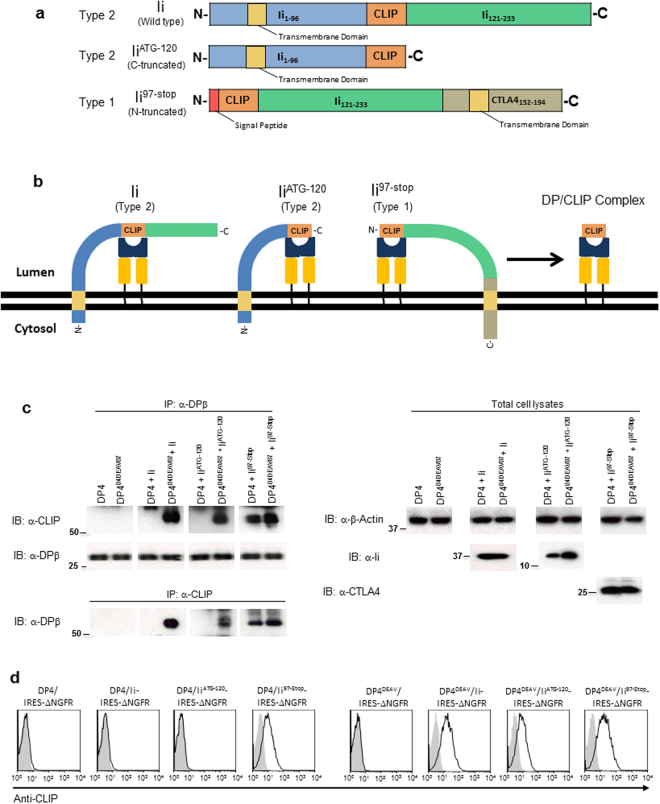Figure 5.
Truncation of N-terminal non-CLIP Ii region(s) restores CLIP-mediated Ii-DP association with DP4. (a) Schema depicting Ii C-terminal (IiATG-120) and N-terminal (Ii97-Stop) truncation mutants compared to wild-type Ii. Note that to generate Ii97-Stop, the transmembrane segment of CTLA4 was fused to the C-terminus of Ii to maintain membrane tethering. (b) Schema depicting Ii truncation mutants compared to wild-type Ii when membrane embedded. Addition of CTLA4 transmembrane region converts Ii97-Stop to a type I transmembrane protein, and consequently the CLIP sequence in each construct is situated on the same side of the ER membrane allowing access to class II as depicted. (c) K562 cells stably expressing the indicated class II allele were transiently transfected with wild-type Ii, IiATG-120, Ii97-Stop or empty vector (control). Lysates were then harvested from these cells, and non-reduced samples were immunoprecipitated and immunoblotted with the indicated mAbs. (d) K562 cells were stably transduced with the indicated combination of genes and then stained using anti-NGFR and anti-CLIP mAbs. The data shown are gated on ΔNGFR+ cells. Full, uncropped blots are provided in Supplementary Fig. 4.

